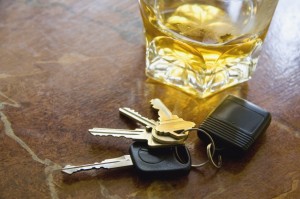Read the information below for a breakdown and commentary by Attorney Brian Sullivan. Note his comments in BLUE around the DUI Law.
RCW 46.61.502 – Driving Under the Influence:
(1) A person is guilty of driving while under the influence of intoxicating liquor or any drug if the person drives a vehicle within this state:
– DUI requires several prongs in the “to convict” jury instructions. First, the State must prove “driving” and appropriate jurisdiction. Given the local tribal lands in Snohomish and Skagit counties, many jurisdictional issues arise in around tribal officer arrests. Driving also generally must be shown by more than a mere admission of a person (e.g., like when an officer shows up to an accident scene and there are multiple people outside the car and the only evidence of one of them being a driver is that single person’s statement that they drove).
(a) And the person has, within two hours after driving, an alcohol concentration of 0.08 or higher as shown by analysis of the person’s breath or blood made under RCW 46.61.506; or
– The second prong can be one of several things. Part (a) requires an accurate and reliable test of the person’s breath or blood. The accuracy of blood and breath testing is problematic not only based on the science involved, but also the known and, to quote our former Defense Secretary, “known-unknowns.” These known unknowns often mean that there is no real certainty for the breath or blood test level. Expert testimony is often required to expose the problems in the State’s evidence.
(b) While the person is under the influence of or affected by intoxicating liquor or any drug; or
– Part (b) is another option for the second prong that the State must prove. It is a myth that the government needs to prove your alcohol or drug level to prove DUI. A bigger myth is that you must be over a .08. Officers frequently arrest citizens who take a breath test, blow well under a .08, but who they believe are “affected to an appreciable degree” by alcohol and or drugs. In these types of cases, the government may attempt to hide the breath test from the jury. Such tactics require that the defense lawyer make difficult decisions in what evidence should be presented, what types of experts must be called, and how the government’s case can be used against them.
(c) While the person is under the combined influence of or affected by intoxicating liquor and any drug.
– Part (c) shows that a little alcohol and a little bit of drugs can be DUI. Again, the standard is “under the influence of or affected by.”
(2) The fact that a person charged with a violation of this section is or has been entitled to use a drug under the laws of this state shall not constitute a defense against a charge of violating this section.
– Medical Prescriptions and Medical Marijuana Recommendations are not sufficient to beat a DUI. Whatever drugs or alcohol you ingest, the State assumes you will not drive if you are affected to an appreciable degree by them. It is notable that the tests that officers conduct to determine “impairment” do not actually demonstrate ability to drive. The prudent lawyer will be prepared to argue all aspects of this defense, including tolerance and face-validity of the testing.
(3) It is an affirmative defense to a violation of subsection (1)(a) of this section which the defendant must prove by a preponderance of the evidence that the defendant consumed a sufficient quantity of alcohol after the time of driving and before the administration of an analysis of the person’s breath or blood to cause the defendant’s alcohol concentration to be 0.08 or more within two hours after driving. The court shall not admit evidence of this defense unless the defendant notifies the prosecution prior to the omnibus or pretrial hearing in the case of the defendant’s intent to assert the affirmative defense.
– Driving then drinking isn’t illegal. So long as you weren’t impaired to an appreciable degree prior to or during the driving. The latest strategy being advanced in this defense often relates to c0nsumption being tied to absorption. The defense is also used in cases where officers arrest an individual who was not driving at the time, but whom the government alleges were drunk driving before being arrested.
(4) Analyses of blood or breath samples obtained more than two hours after the alleged driving may be used as evidence that within two hours of the alleged driving, a person had an alcohol concentration of 0.08 or more in violation of subsection (1)(a) of this section, and in any case in which the analysis shows an alcohol concentration above 0.00 may be used as evidence that a person was under the influence of or affected by intoxicating liquor or any drug in violation of subsection (1)(b) or (c) of this section.
– The “within two hours standard” for a breath test does not affect, for purposes of this statute, admissibility of the BAC results. However, other issues to admissibility and weight are often brought by the prudent lawyer.
(5) Except as provided in subsection (6) of this section, a violation of this section is a gross misdemeanor.
– A gross misdemeanor in Washington State is generally a crime that carries a maximum of 365 days in jail and a $5000 fine (the total rises to $10,000 after State assessments).
(6) It is a class C felony punishable under chapter 9.94A RCW, or chapter 13.40 RCW if the person is a juvenile, if: (a) The person has four or more prior offenses within ten years as defined in RCW 46.61.5055; or (b) the person has ever previously been convicted of (i) vehicular homicide while under the influence of intoxicating liquor or any drug, RCW 46.61.520(1)(a), (ii) vehicular assault while under the influence of intoxicating liquor or any drug, RCW 46.61.522(1)(b), or (iii) an out-of-state offense comparable to the offense specified in (b)(i) or (ii) of this subsection.
– The Felony DUI Law is new in Washington. A 5th DUI in a 10 year period, or prior conviction for Vehicular Assault or Homicide with alcohol (or similar out of state charges) changes the DUI from a misdemeanor to a felony.
